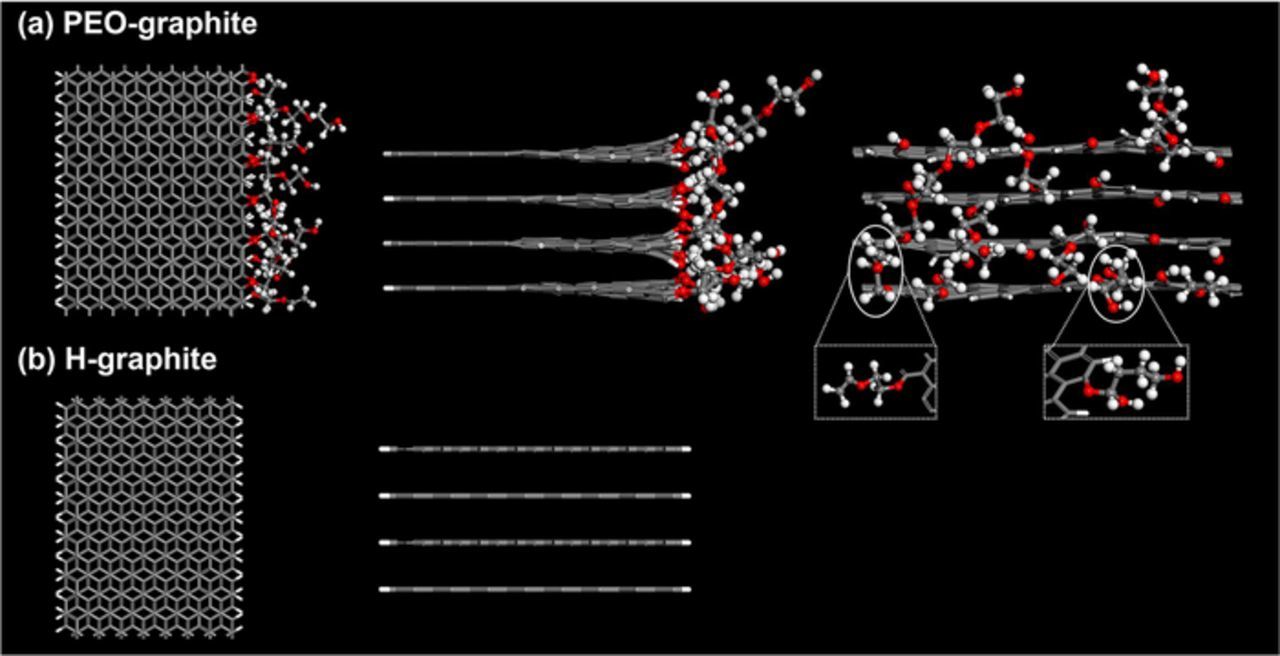Thermostable Artificial Solid-Electrolyte Interface Layer Covalently Linked to Graphite for Lithium Ion Battery: Molecular Dynamics Simulations
슈퍼관리자
2021-05-21
Thermostable Artificial Solid-Electrolyte Interface Layer Covalently Linked to Graphite for Lithium Ion Battery: Molecular Dynamics Simulations
-
Authors :
H. Guk, D. Kim, S.-H. Choi, D. H. Chung, and S. S. Han
-
Journal :
Journal of Electrochemical Society
-
Vol :
163
-
Page :
A917-A922
-
Year :
2016

Abstract
The lithium ion batteries (LIBs) are the most widely used power source for portable electronic devices, and the performance of the LIBs needs to be improved for the electrical vehicles and mobile devices. The formation of the stable solid-electrolyte interface (SEI) layer is closely related to Columbic efficiency and long cycle life of battery so the stable SEI layer is essential to the performance of the LIBs. To suggest an artificial SEI layer model that improves the stability of the LIBs, we performed the molecular dynamics simulation using the reactive force field. The artificial SEI layer model (PEO-graphite) was generated from the reaction between the graphite edge plane functionalized with hydroxyl groups and ethylene oxides, thereby having PEO-like polymers covalently linked to the graphite edge plane. The solvation number of Li+ and thermal stability of the SEI layer were investigated to understand the characteristics of the PEO-graphite. The analysis results show that the PEO-graphite effectively prevents the co-intercalation of the solvents into the graphite, and the covalent bonds between PEO polymers and the graphite edge plane provide excellent thermal stability to the PEO-graphite compared to the graphite physically coated with the polymers.















